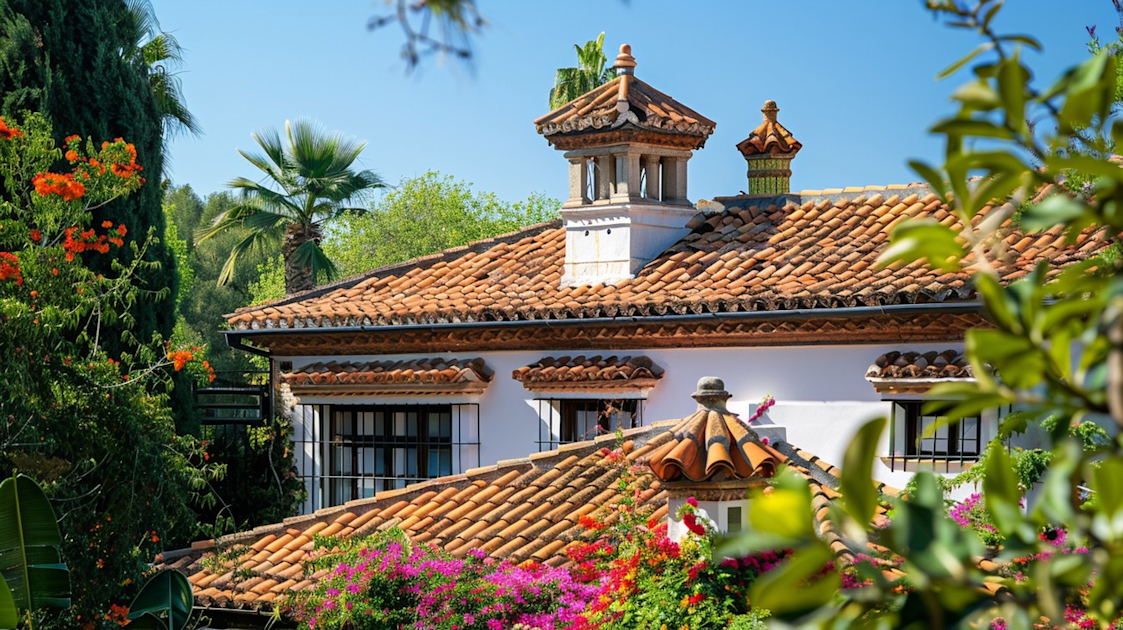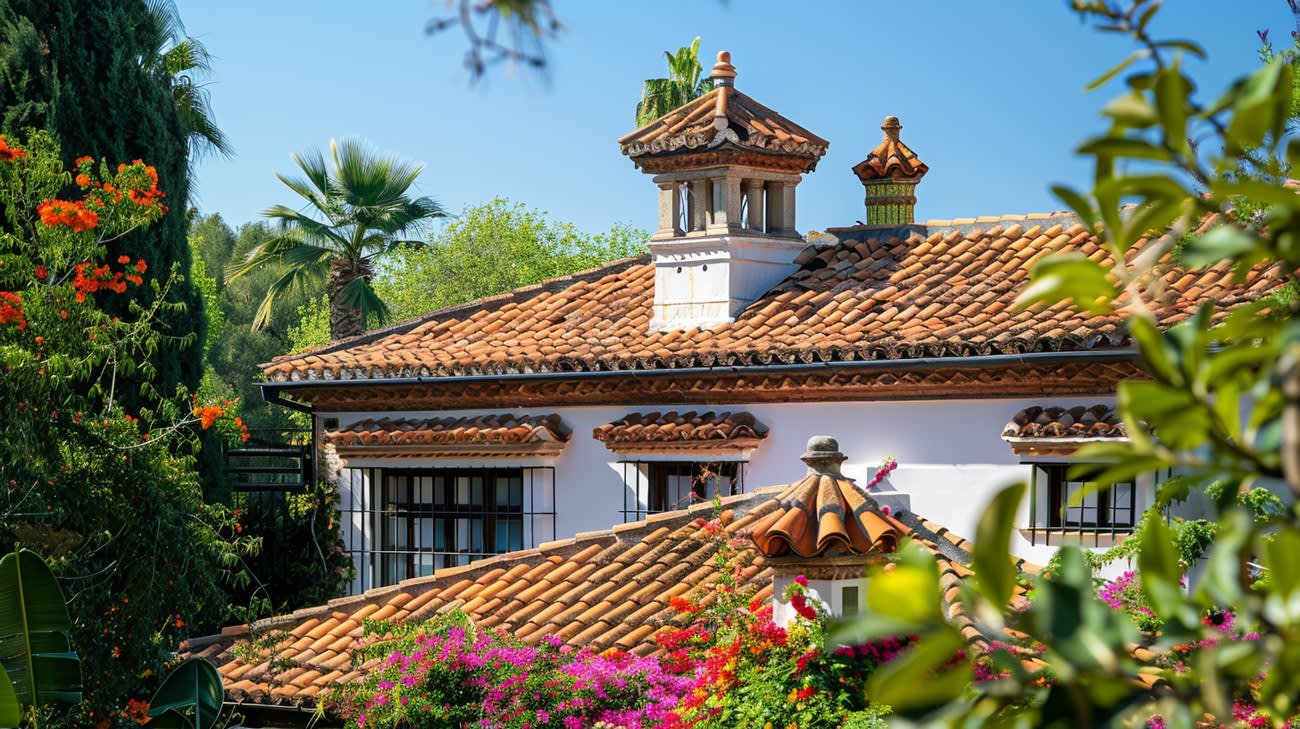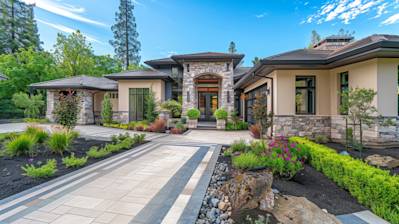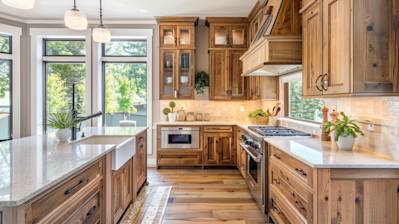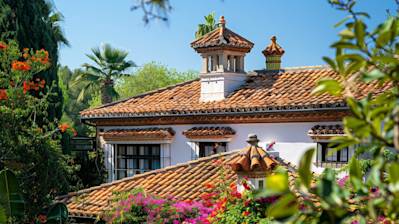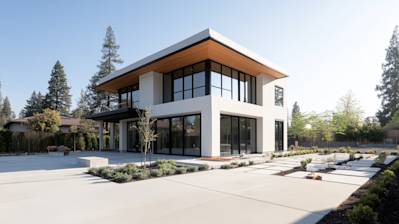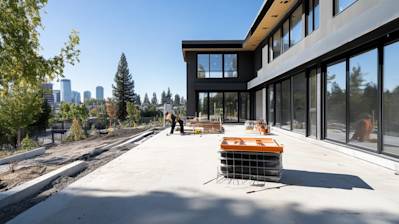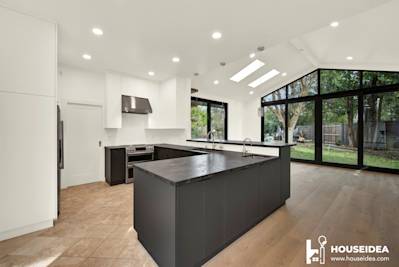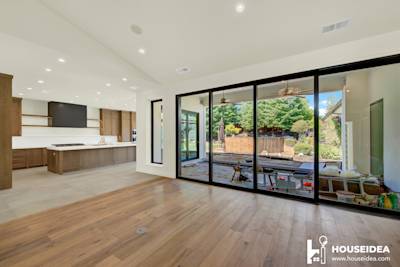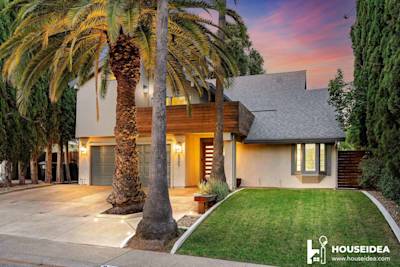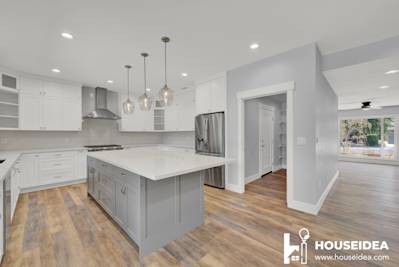When considering roofing options that offer both durability and an unmatched aesthetic, Spanish tile roofs emerge as a popular choice. These tiles not only enhance the architectural appeal of any home but also provide robust protection against the elements. Spanish tile roofs have a rich history and increasingly represent a fusion of traditional style and contemporary design demands. Let’s delve into what makes these roofs so appealing and enduring.
A Brief History of Spanish Tile Roofs
Spanish tile roofs date back to the 17th century when they were introduced by Spanish settlers. Originally, these clay tiles were designed to withstand the harsh Mediterranean climate, characterized by intense sun and sporadic rain. Their popularity spread quickly because of their durability, thermal efficiency, and the distinct aesthetics they lend to structures.
Over the centuries, the classic look of Spanish tiles has been adapted across the world. Today, they remain a cherished roofing option, particularly in warmer climates that echo the tiles' Mediterranean origins.
Key Features of Spanish Tile Roofs
Timeless Aesthetics
Spanish tile roofs boast a distinct and recognizable appearance. Their curved design creates a beautiful pattern, producing a visually pleasing ripple effect when observed from a distance. Available in a wide range of colors, these tiles complement virtually any home design, from adobe bungalows to modern villas.
Durability and Longevity
One of the most significant advantages of Spanish tile roofs is their longevity. High-quality clay tiles can last over a century when properly maintained. They are resistant to fire, rot, and insect damage, making them one of the most resilient roofing options on the market.
Thermal Efficiency
Spanish tile roofs excel in providing thermal insulation. Their design allows for natural ventilation, which reduces heat absorption during hot weather and helps maintain warmth during cooler seasons. This energy efficiency translates into cost savings on heating and cooling bills.
Installation Considerations
Understanding the Load
While incredibly durable, Spanish tile roofs are significantly heavier than conventional asphalt shingles. Before installation, it's crucial to ensure that your home can support the additional weight. Consulting with a structural engineer can help assess whether extra reinforcement is needed.
Proper Slope and Waterproofing
Spanish tile roofs rely on gravity and their overlapping design to keep moisture out. Therefore, they require appropriate roof slopes to function correctly. Ensuring a proper waterproofing layer beneath the tiles will further safeguard against leaks.
Maintenance Tips for Longevity
Maintaining a Spanish tile roof involves regular inspections to identify and fix any cracked or broken tiles promptly. Here is a checklist to ensure your roof remains in peak condition:
- Regular Cleaning: Remove debris that can accumulate and trap moisture.
- Moss and Algae Control: Utilize treatments to prevent growth that can damage tiles.
- Routine Inspections: Conduct regular inspections to identify any potential issues early on.
Costs and Investment
Constructing a Spanish tile roof represents a significant investment, but one that pays dividends over time. While the initial cost is higher compared to other roofing materials, their long lifespan reduces the need for frequent repairs and replacements. In addition to functional savings, they often increase property value, offering aesthetic appeal coupled with practical benefits.
Cost Factors
- Material Selection: The choice between authentic clay versus concrete tiles can impact costs significantly.
- Complexity of Design: More intricate roof designs may require additional labor and materials.
- Geographic Location: Shipping costs for the materials can fluctuate based on proximity to a supplier.
Exploring Design Options
Varieties of Spanish Tiles
Spanish tiles come in several styles, with variations that enhance functional and aesthetic appeal:
- S-Tiles: Known for their elegant S-shape, these tiles interlock, providing a tight seal.
- Mission Tiles: Also referred to as double Roman tiles, they are more cylindrical in shape, allowing for greater aesthetic diversity.
- Barrel Tiles: The traditional choice, these are used extensively in historic restorations.
Color Choices
While traditional terra-cotta tones are common, modern manufacturing offers Spanish tiles in an array of colors and finishes. These options allow homeowners to match their roofs to their personal tastes and integrate seamlessly with the existing architectural environment.

Frequently Asked Questions About Spanish Tile Roofs
How durable are Spanish tile roofs?
Spanish tile roofs are renowned for their exceptional durability. Made predominantly from clay or concrete, these tiles can withstand harsh weather conditions, such as heavy rain, hail, and strong winds. They have a lifespan that can exceed 50 years, with some lasting over a century if properly maintained. The clay or concrete material is naturally resistant to rot and insect damage, making it a low-maintenance, long-term roofing solution.
Are Spanish tile roofs energy-efficient?
Yes, Spanish tile roofs offer great energy efficiency. The natural thermal resistance of the materials used, along with their ability to reflect a significant amount of the sun’s heat, helps maintain a consistent internal temperature in your home. This means less reliance on air conditioning during hot weather, which can lead to lower energy bills. Additionally, the airflow created under the curves of the tiles provides added insulation and cooling benefits.
What maintenance do Spanish tile roofs require?
Spanish tile roofs require relatively low maintenance compared to other roofing types. Regular inspections are recommended to ensure that tiles are intact and free from cracks or breakage. Clearing any debris, like leaves or branches, that may accumulate can also help prevent water damage. It is also beneficial to check the roof for moss or algae growth, particularly in humid climates, and clean it with a soft brush or mild roof cleaner.
Can Spanish tile roofs support solar panels?
Absolutely, Spanish tile roofs can be fitted with solar panels. However, installing solar panels on a Spanish tile roof does require special mounting systems due to the tiles' curved shape. It is important to have this work carried out by professionals who are experienced with Spanish tile roofs to avoid any potential damage during installation. Done correctly, solar panels can enhance the energy efficiency of your home while maintaining the aesthetic appeal of your roofing.
How do Spanish tile roofs fare in different climates?
Spanish tile roofs are versatile and can perform well in a variety of climates. They are particularly beneficial in hot and sunny climates due to their excellent heat resistance and reflective properties. In colder climates, Spanish tile roofs can handle snow and ice, provided the roof is properly pitched to facilitate drainage. The tiles' weight and structure also make them sturdy enough to withstand strong winds, making them suitable for coastal and hurricane-prone areas.
Are there color variations available for Spanish tile roofs?
Yes, homeowners can choose from a variety of colors for Spanish tile roofs. Traditional red or terracotta is most common, but there are many other shades available, including brown, grey, and even green or blue. Some tile manufacturers also offer custom colors and glazing options that can add unique hues and sheen to your roof, allowing you to match or complement your home's exterior design.
How do Spanish tile roofs impact property value?
Installing a Spanish tile roof can positively impact property value due to their aesthetic appeal and durability. These roofs are often associated with upscale and architecturally significant homes, providing classic style along with functionality. Buyers often appreciate the long lifespan and low maintenance needs of Spanish tile roofs, which can be a selling point. The energy efficiency and environmental benefits further enhance their attractiveness to potential buyers.
Are Spanish tile roofs environmentally friendly?
Spanish tile roofs are considered environmentally friendly for several reasons. The production process for clay and concrete tiles generally has a lower environmental impact compared to other roofing materials. The longevity of Spanish tile roofs also reduces the need for frequent replacements, decreasing roofing waste. Moreover, their energy efficiency contributes to reduced fossil fuel consumption by lowering heating and cooling demands in your home.
How much do Spanish tile roofs typically cost?
The cost of Spanish tile roofs can vary widely depending on factors like tile material (clay or concrete), roof size, and complexity of installation. In general, Spanish tile roofs tend to be more expensive than asphalt shingles but offer superior longevity and low maintenance. On average, homeowners might expect to pay between $10 to $20 per square foot for total installation. While the initial investment can be higher, the long-term savings on maintenance and energy costs can make them a cost-effective choice.

Diving into the Pros and Cons of Spanish Tile Roofs
Pros
Timeless Aesthetic Appeal
Spanish tile roofs make a house look fantastic thanks to their classic beauty. The earthy tones and rustic design can transform any home into a Mediterranean sanctuary. If curb appeal is a priority for you, these tiles deliver big time.
Durability and Longevity
One thing about Spanish tile roofs is that they are built to last. These tiles can withstand the test of time, often enduring 50 to 100 years, depending on climate and maintenance. You won’t be thinking about reroofing for decades, which is a huge plus.
Energy Efficiency
Who doesn't like saving on their energy bills? Spanish tiles are excellent at reflecting sunlight away, keeping your home cooler in the summer. This could mean less reliance on air conditioning and more savings on your electric bill.
Resistance to Fire
Worried about wildfires or sparks from that charming fireplace? Spanish tile roofs offer excellent fire resistance, adding a layer of safety to your home. This factor can offer peace of mind, knowing your roof is naturally better at resisting flames.
Environmentally Friendly
Spanish tiles are made from clay or concrete, which are eco-friendly materials. These materials can be easily recycled, which means less waste when the tiles eventually do need replacing. It's a choice you can feel good about.
Low Maintenance
Once installed, there's not much upkeep. Spanish tile roofs require less maintenance compared to other roofing types. They don’t rot, which means you spend less time worrying about routine fixes.
Cons
High Initial Cost
Spanish tile roofs can be pricey upfront. The tiles themselves can be expensive, and the installation cost is often higher than other roofing materials. You’re essentially paying a premium for the durability and aesthetics at the outset.
Weight Considerations
These tiles are heavy—a lot heavier than other roofing materials. Not all homes can support the weight of Spanish tiles without additional structural support, which can add to the cost and complexity of installation.
Potential for Breakage
While durable overall, Spanish tiles can be brittle and prone to cracking under pressure. Heavy impacts, like falling branches or walking on the roof, can break them, leading to pricey repairs.
Complicated Installation
The unique shape and design of Spanish tiles require skilled installers, which isn’t always easy or cheap to find. This complexity can deter those looking for a quick and simple roofing project.
Limited Color Options
While the classic earthy tones are beautiful, they might not suit everyone's taste or architectural style preferences. If you’re looking for a wider range of colors, Spanish tiles might limit your creative visions.
Lengthy Installation Time
Because of their complexity, installing Spanish tile roofs can take longer than other roofing types. If you’re on a tight schedule, this might prove inconvenient.
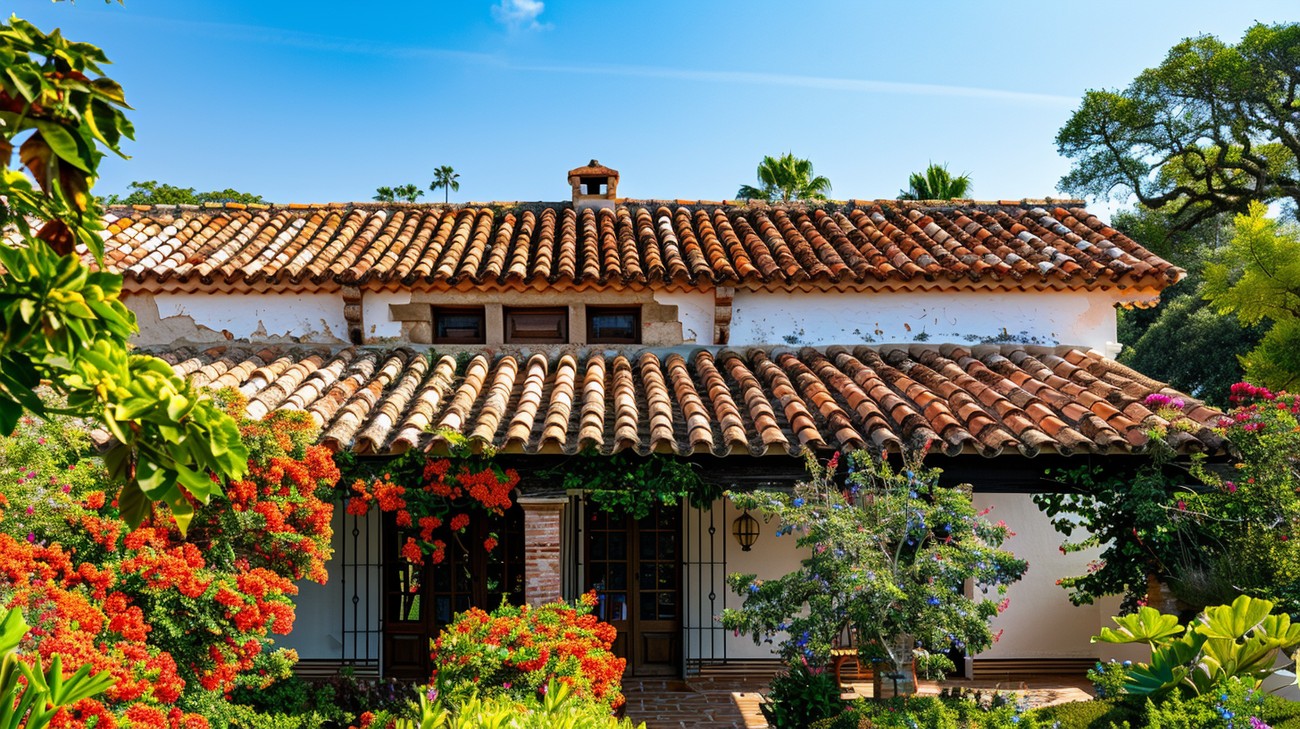
Final Thoughts
Spanish tile roofs are not only an aesthetically pleasing choice for homeowners but also a practical investment that adds longevity and character to your home. With their ability to withstand various weather conditions while requiring minimal maintenance, these roofs can enhance the overall value of your property, especially for those of us serving homeowners in Sacramento, CA.
If you're considering making the switch to Spanish tile roofs or just want to learn more about how they can benefit your home, we're here to help. At HouseIdea, we pride ourselves on being your trusted local expert, ready to answer your questions and guide you through the process. Feel free to reach out to us to schedule a consultation or request a free estimate. Your dream roof is just a conversation away!
Tags: roofing, architecture, Spain,

